Certifying tomorrow’s signmakers
by | 16 November 2018 3:31 pm
By Peter Saunders
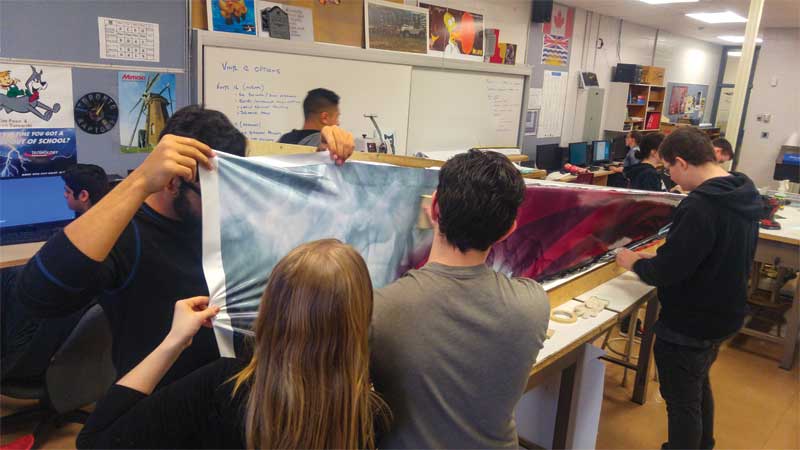 [1]
[1]
As the Canadian sign industry faces challenges in finding the next generation of professionals, it has turned to a number of methods for encouraging young people to consider signmaking as a career.
One such method has been Sign Manufacturing Day, which invites students across Canada and the U.S. to visit and tour sign companies in their area. Held each October, this event showcases the equipment and processes involved in sign fabrication, offers educational sessions, provides a better understanding of the industry and directly results in internship and job applications. In 2017, by way of example, more than 3700 potential employees walked through the doors of the Sign Association of Canada (SAC) and International Sign Association (ISA) member companies participating in the event, marking significant growth over past years.
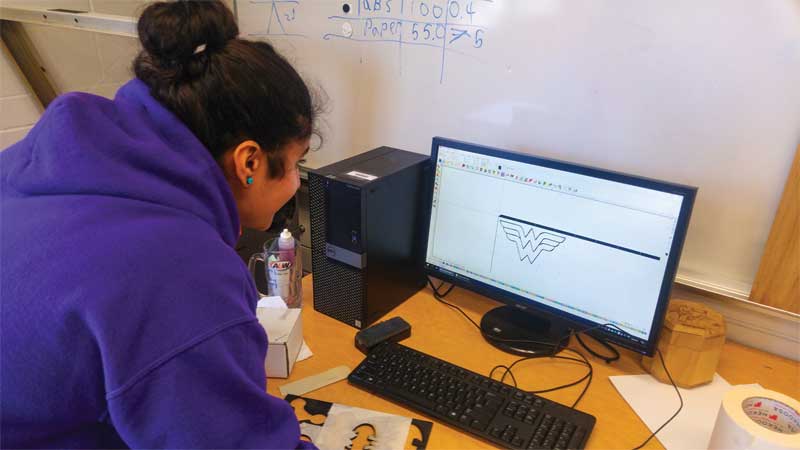 [2]
[2]Grade 11 students are introduced to signmaking through such elements as graphic design and substrate cutting.
A related challenge, however, is ensuring students are suitably equipped with the skills they will need to join the sign industry in the first place.
Documenting progress
One person addressing this challenge is David Liversidge, who heads a sign design program at W.J. Mouat Secondary School in Abbotsford, B.C., and is a member of Sign Media Canada’s editorial advisory board (EAB). He has been working with SAC in recent years to develop a certification program for his students.
“To my knowledge, it is the first of its kind for the sign industry in Canada,” he says. “The idea is for the kids to earn a document they can then take to a sign shop as certification of their training and abilities.”
Liversidge introduces students in his Grade 11 class to signmaking through such elements as graphic design and substrate cutting. They start out with simple projects like wall posters.
“A lot of it is crafty, but over time, they build up a comprehensive skill set on digital equipment,” he says. “The technology really appeals to kids of every level in school. Everyone can enjoy weeding vinyl, for example. As they learn how to make and cut graphics, they are excited to see the results.”
In Grade 12, they move on to larger in-house projects, including wide-format printed banners for sports teams and non-profit events.
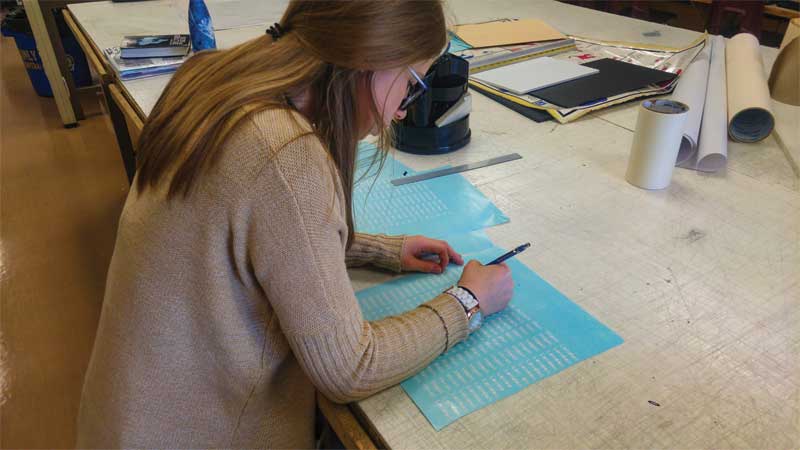 [3]
[3]Most of the jobs the students get are still entry-level, but it is a huge relief to sign shop owners when they can get a recent student to do some of the work they would otherwise have to do themselves.
“As they get more involved in the production side of things, they produce simple car wraps,” says Liversidge. “At the upper end, you get kids taking on the challenges of working with vector-based graphics, computer numerical control (CNC) routing and laser engraving.”
One of the keys to the program’s success is access to the right equipment. In addition to a computer lab running Corel software, W.J. Mouat allows students to work with inkjet printing and plasma cutting systems.
“While other schools are getting into this sort of stuff and many in British Columbia have vinyl cutters, ours is truly a fully functioning sign shop,” says Liversidge.
This means high school students can graduate with a continuum of experience that is relevant to future job postings with sign companies.
“Some people are already entrepreneurial, but anyone can be trained,” says Liversidge.
Nationally endorsed
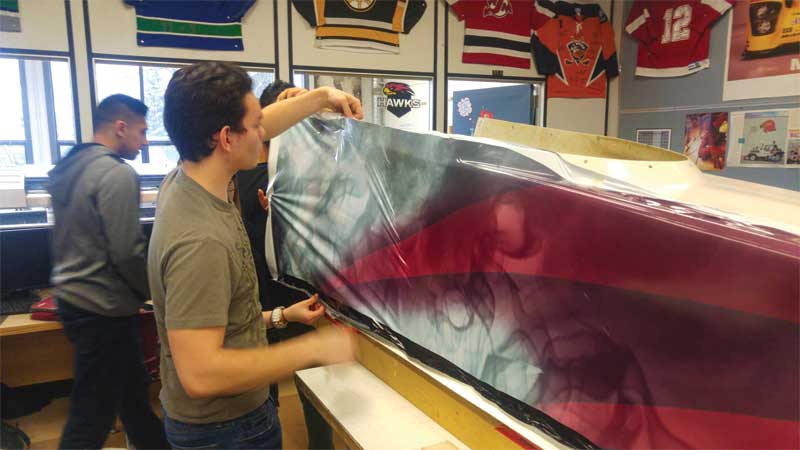 [4]
[4]To augment the classwork accordingly, students commit to week-long work placements before their exams at the end of the school year.
Liversidge began speaking with SAC about a certification in 2014 and got an enthusiastic response. By the fall of 2016, endorsed by SAC through its British Columbia chapter, he was running a ‘pilot’ class of six students.
“The idea was they would come out of the class certified the following June,” he explains.
To augment the classwork accordingly, Liversidge had the students commit to week-long work placements before their exams at the end of the school year.
“On-the-job training is important and there are lots of family-owned sign shops where they can get it,” he says. “Years ago, the Northern Alberta Institute of Technology (NAIT) in Edmonton had a sign arts program that took a similar approach.”
Once they have completed the program, the students are endorsed with SAC Level 1 Certification, which addresses the use of vinyl cutting software. Liversidge’s vision has been to add Level 2 for digital wide-format printing of banners and wraps and Level 3 for CNC routing and laser engraving.
“Most of the jobs the students get are still entry-level, but it is a huge relief to sign shop owners when they can get a recent student to do some of the work they would otherwise have to do themselves,” says Liversidge. “That way, the owner can focus on the business end of things. It’s a win-win.”
Getting the technology into schools
The next step will be to expand the program, so other students across the country can also participate.
“There aren’t a lot of schools today that teach signmaking classes,” Liversidge admits. “In Vancouver, the Emily Carr University of Art and Design focuses on graphic design for packaging and retail applications. And in Toronto, students at Ryerson University’s School of Graphic Communications Management (GCM) have earned scholarships from the Specialty Graphic Imaging Association (SGIA).”
And given those are post-secondary educational institutions, there is a need to start preparing students earlier, in high schools like W.J. Mouat.
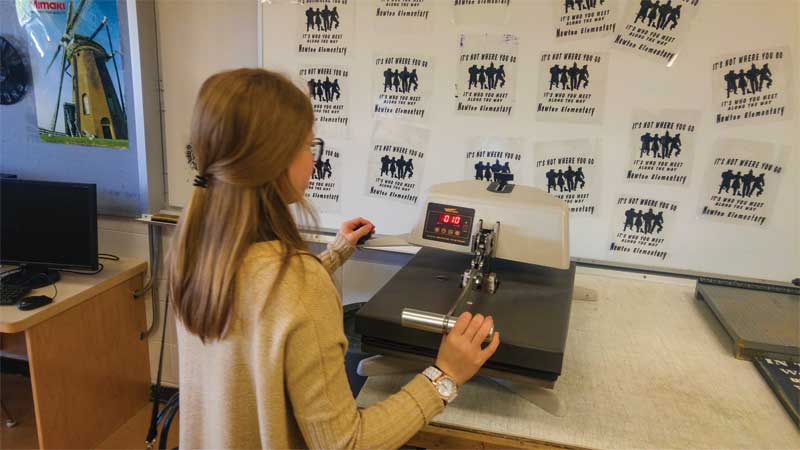 [5]
[5]One of the keys to the program’s success is access to the right equipment.
“I’ve put on vinyl cutting workshops for other high school teachers, so they can share that experience with their kids,” says Liversidge. “We’ve got to get this technology into more schools. Not all of them can afford to buy wide-format printers, of course, but an old Roland VersaCamm isn’t too hard to find or too expensive to pick up. And the kids are excited to use it.”
Indeed, W.J. Mouat’s example shows how viable the technology can be in a secondary school environment, with Liversidge running nine classes a year, with 30 kids in each class.
“We now have a full inventory of equipment, but we built that up over many years, paying for it in part by producing and selling banners and posters in the community,” he says. “If you build it, they will come!”
For more information, contact David Liversidge via e-mail at dave_liversidge@sd34.bc.ca[6].
- [Image]: https://www.signmedia.ca/wp-content/uploads/2018/11/20170302_111633.jpg
- [Image]: https://www.signmedia.ca/wp-content/uploads/2018/11/20170502_113550.jpg
- [Image]: https://www.signmedia.ca/wp-content/uploads/2018/11/20170502_112944.jpg
- [Image]: https://www.signmedia.ca/wp-content/uploads/2018/11/20170302_111536.jpg
- [Image]: https://www.signmedia.ca/wp-content/uploads/2018/11/20170502_112959.jpg
- dave_liversidge@sd34.bc.ca: mailto:dave_liversidge@sd34.bc.ca
Source URL: https://www.signmedia.ca/certifying-tomorrows-signmakers/